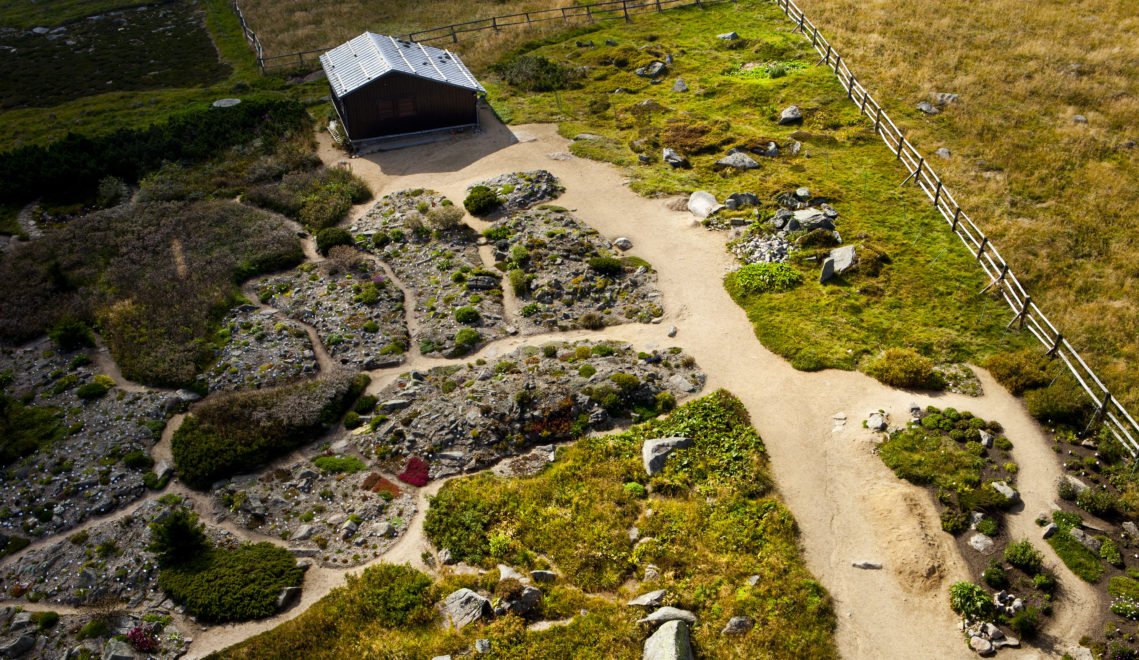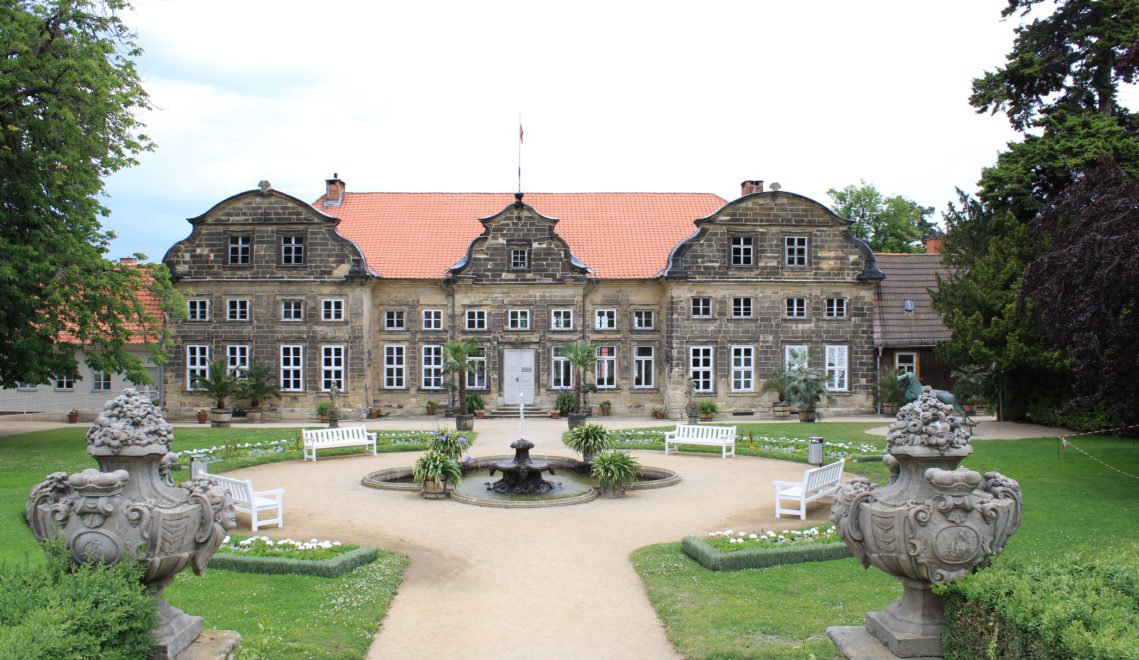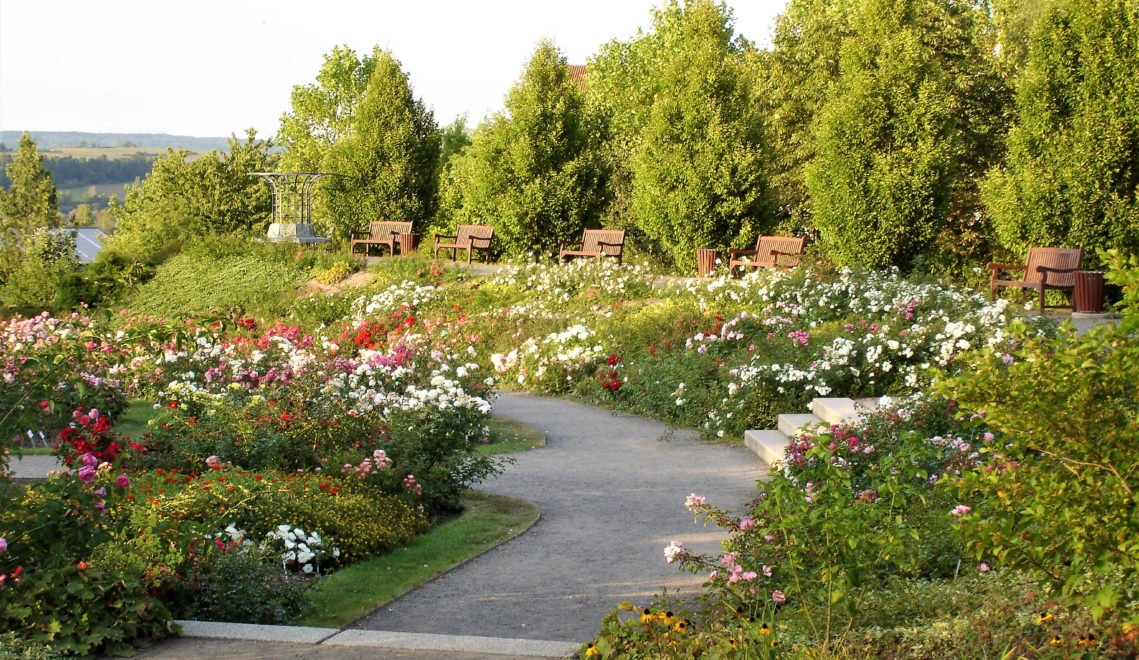Lush seas of blossoms, parks of baroque rulers, quiet corners in the shadows of monasteries - anyone who loves gardens will discover many a gem in the Harz Mountains. Even on the Brocken.
Table of contents
1. Drübeck Monastery
2. Brocken Garden
3. Terrace garden Blankenburg
4. Europa-Rosarium Sangerhausen
5. Abbey Garden and Brühl Park Quedlinburg
6. Labyrinth Helfta
In the meeting and guest houses of the former Drübeck monastery is always bustling. But there is a place of retreat: five gardens, each with a prayer house that used to be open to the abbey ladies and has been faithfully restored to its original state. These small gardens do not offer a sensuous variety of flowers, but carefully trimmed lawns with gravel paths and small walls. The house garden, from which the monastery kitchen is supplied with herbs and vegetables, is quite different. The abbess's garden opens up behind the domain building, the rose garden lies in between, and orchards stretch out beyond the monastery walls. A popular place for a glass of wine in the shade: the monastery courtyard with a linden tree planted in 1730.
Klostergarten 6, 38871 Ilseburg-Drübeck, freely accessible all year round.
Also for plants forms the harsh climate at the Chunk a real challenge. In 1890, botanists made a virtue of the unfavorable location and in the Brocken Garden Several hundred high mountain plants from all over the world are gathered here. Brocken hikers have to look closely, so little does this hoard of survival artists below the Brocken summit stand out. Most of the plants duck flat to the ground, snuggled together to form inconspicuous cushions, a felt-like fur protecting the leaves, and in the case of the edelweiss even the flowers. The wall pepper from Iran blooms in shy pale pink, the slipper flower from Patagonia bizarrely, flanked by dolomite cinquefoil and Caucasian silverroot. From the Harz Mountains comes the Brocken anemone, which belongs to the pasque flower family and blooms from May to July. The budgerigar gentian from Tibet heralds the end of the season in October. Because the 1,800 plant species are very sensitive to treading and are scrutinized by scientists, the Brocken Garden is only accessible with a guided tour. Brocken summit, guided tour mid-May-mid-Oct. Mon. to Fri. 11:30 a.m., 2 p.m., Sat., Sun. only as part of the Brocken summit circular hike, www.nationalpark-harz.de

The age of powdered wigs, courtly hunts and opulent merrymaking also left its mark on Blankenburg. Duke Ludwig Rudolf von Braunschweig-Wolfenbüttel had the town developed into a princely residence whose Baroque splendor continued in the parks and gardens. Today, the 107 hectares of gardens include a number of interesting sites, including the terraced garden, which was laid out in 1718. Thanks to its hillside location, the view from the flight of steps extends far across the countryside, and playful arbors and sculptures, fountains and ponds, and a neptune grotto conjure up the Baroque lifestyle of yesteryear. The duke also did not skimp on the garden house and laid it out so generously that today it is called the "Little Palace. Schnappelberg 6, 38889 Blankenburg (Harz), terrace garden freely accessible all year round

In the southern Harz region the largest collection of roses in the world of the queen of flowers. Around 8500 rose varieties thrive in Sangerhausen on some 13 hectares. Noble roses proudly balance their yellow, white and red flower heads on their slender necks, waves of shrub roses hang over trellises, richly spiked moss roses fend off attempts to pick them, and the purple Damascene roses, from which oil is extracted, smell beguiling. In addition to classic and modern cultivars, the Rosarium also has one of the world's largest collections of wild roses and old rose varieties. The main flowering period lasts from May to July. Those who are plagued with rose rust and mildew in their home garden will be helped: From June to mid-August, experts answer all questions about rose planting every Saturday and Sunday. Am Rosengarten 2 a, 06526 Sangerhausen, www.europa-rosarium.de, open daily in summer until 20.00, otherwise shortened opening hours

Like Quedlingburg's old town Abteigarten and Brühlpark are UNESCO World Heritage Sites. Saxony-Anhalt and the EU have put a lot of money into upgrading the park as part of the "Garden Dreams" project and transforming it back into a Baroque-English landscape park. Away from the well-maintained groups of trees, shrubs and lawns lies the natural, wild part along the Bode River, where wild garlic blooms in spring and woodpeckers drum. Every year in June, a large art festival takes place in the park. From the baroque main path, a path leads straight to the castle, right through the Abteigarten. As in the past, one flower bed is lined up at right angles to the next - a reminder of the time when abbesses were in charge and the city drew its wealth from seed cultivation. If you are good on foot, you can take the garden circuit. It starts at the castle, leads through the Abbey Garden to the Brühl, from there to the Dechanie Garden and ends in the Word Garden in the immediate vicinity of the old town. Quedlinburg city center, free access all year round
Labyrinths whose paths lead to the center, belong to the tradition of medieval Christianity. This has been taken up in green form in the Helfta monastery. In the garden, the Cistercian nuns have laid out a 30 x 40 meter labyrinth. Seven paths wind around the small arbor in the center. One walks past spicy-smelling lavender, rosemary and lushly blooming medicinal plants, hornbeams, roses and butterfly bushes. A wonderful place to come to rest and enjoy the beauty of creation. St. Marien zu Helfta Monastery, Lindenstr. 36, 06295 Lutherstadt Eisleben, garden freely accessible all year round during the day
Cover photo: The colorful garden of Quedlinburg Castle © Marc Venema / shutterstock